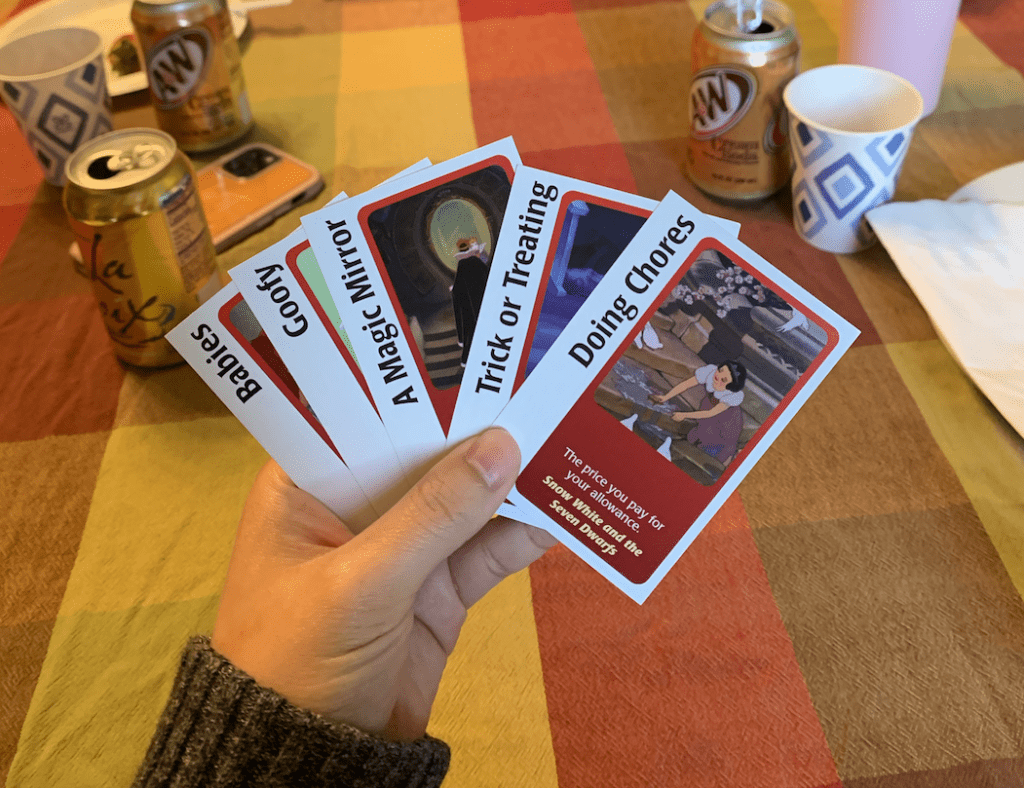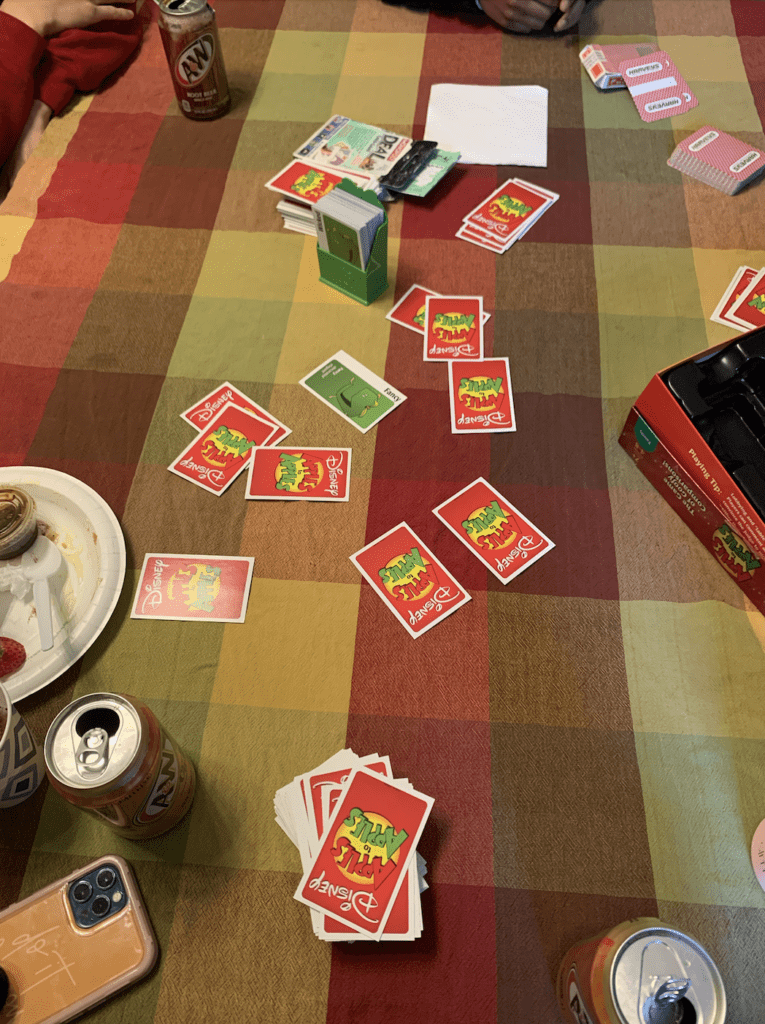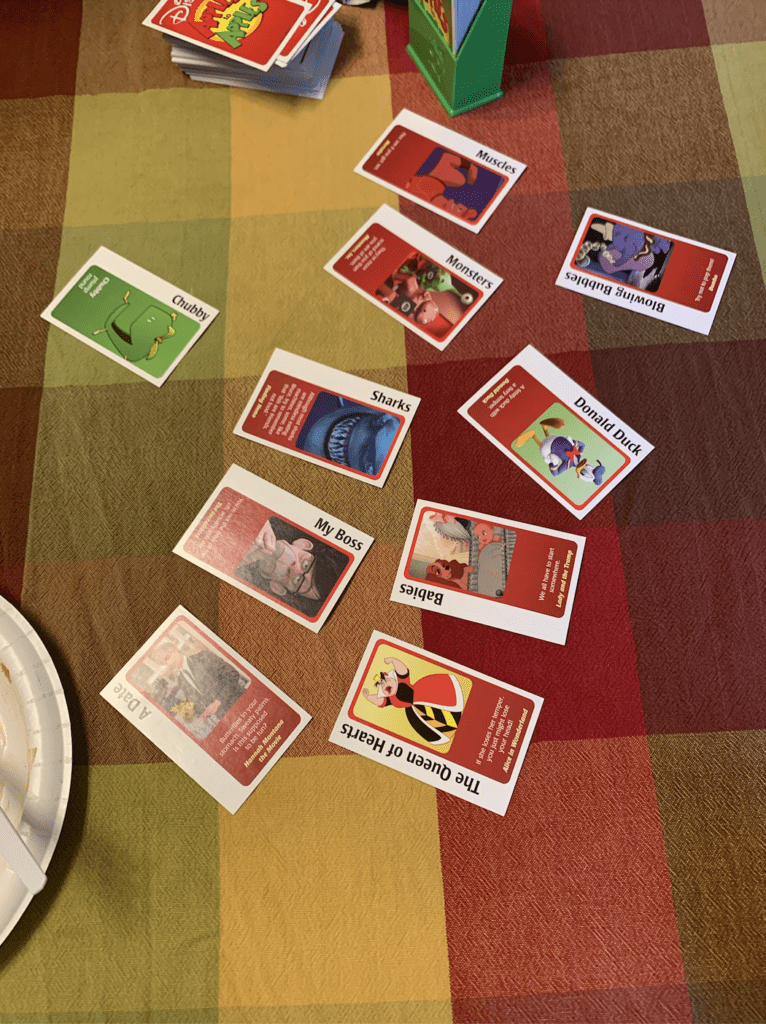This weekend, I played the game Apples to Apple (Disney Edition) with my friends and this game can be categorized as a judging game. The creator of the game was Matthew Kirby and we played it as a physical card game. The game is for ages 12 and up, and can be played by 4-10 people.
Everyone starts out with five cards in their hands that are all nouns.

Each round, there is a judge who draws an adjective from the green draw pile. Based the adjective, each player has to put down a noun card that they think the judge will find most funny paired with that adjective.

Everyone puts their card face down in the middle, and the judge mixes it and flips them over. Then, the judge chooses the one they find the most funny, sensible, or simply what-they-like-the-most, and the winner for that round gets to keep the green adjective card as a way to keep track of points.

The judge role then is passed over to the next person and this process repeats itself. By passing the power of the judge around, player relationships and objectives are constantly changing throughout the game. As a judge, your objective is to choose the best card. As a regular player, your objective is to place the best card or even try to convince the judge to choose your card and not choose other players’ cards during the deliberation time.
The type of fun that this game produces is fellowship. There are many elements of the game that lead to this type of fun. First is the scalability. This game can be played with a big group of people (up to 10!) as there are enough cards in the deck to accommodate a large group. Second is the attention required. The game doesn’t require constant concentration, and thus, gives space for side conversations and multi-tasking. For example, people were eating while they were playing and there is always time in between rounds where people try to get the judge to choose their choice and laugh about the final choice that was made. Last but not least is the need for empathy. The judge is always changing, so people have to adapt to others’ sense of humor, which requires knowing the person to a certain degree. For example, one player said:
“I don’t know if Preston will like this.”
However, even if you may not know the person well, it also provides good opportunity to get to know the person on a deeper level.
This game works based on chance and judging. There is still an element of chance because you are drawing cards from a deck, so the nouns you draw may match with the adjective by chance. However, there is also a component of judging that presents a dynamic where the players have to guess at what the judge will like. In fact, people may also decide to not choose the obvious answer as one of the players said:
“That’s the obvious winner — so I’m not going to choose that.”
By giving power to the players to decide the winner, it makes the game a lot more spontaneous, unpredictable, and interesting!
We played with the Disney version of the game, which we thought was not as good as the original because it sometimes included random Disney-related cards like “Space Mountain Attraction” or “Belle” which were hard to match with an adjective. To improve this aspect, I would either make the adjectives also fit the Disney theme or create noun cards that can be better utilized in the context of the game.
Apples to Apples is often compared to Cards Against Humanity, as its PG counterpart. The primary difference is that Cards Against Humanity’s prompt cards have the players tcomplete a sentence with their nouns, and the cards themselves are based on inappropriate jokes and dark humor. This may be better for close friends as people have to get really vulnerable. Therefore, Apples to Apples is much more appropriate for a younger audience and for friends who may not be that close.
People don’t need to get very vulnerable at all when playing Apples to Apples. When I played, none of us talked about anything personal, rather we focused more on the words themselves rather than sharing stories or experiences. Overall, I think that players can have a fun, low-stress time playing Apples to Apples and it’s a good game for large group introductions and for people who are looking to have something to do in a relaxed environment!


